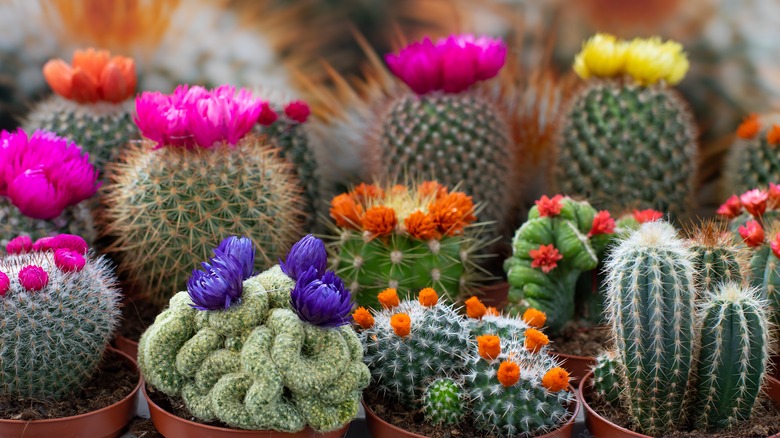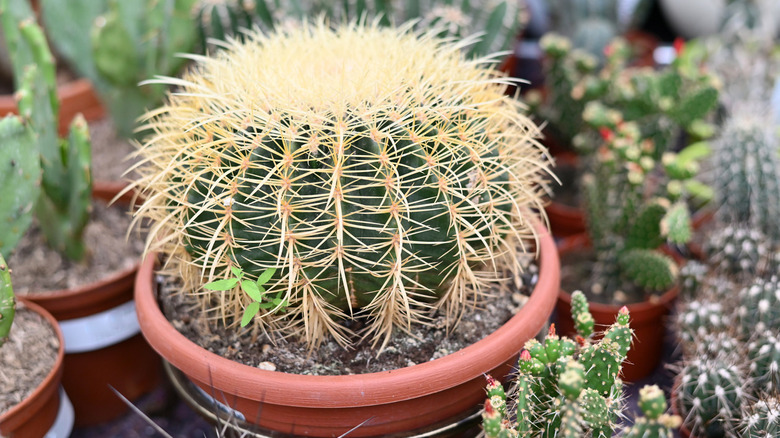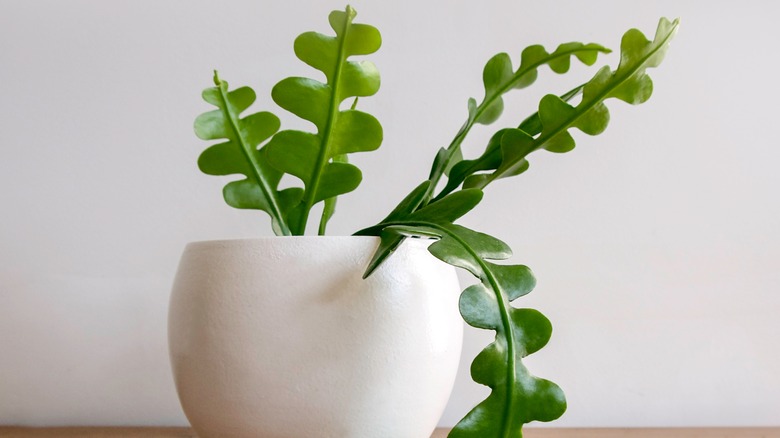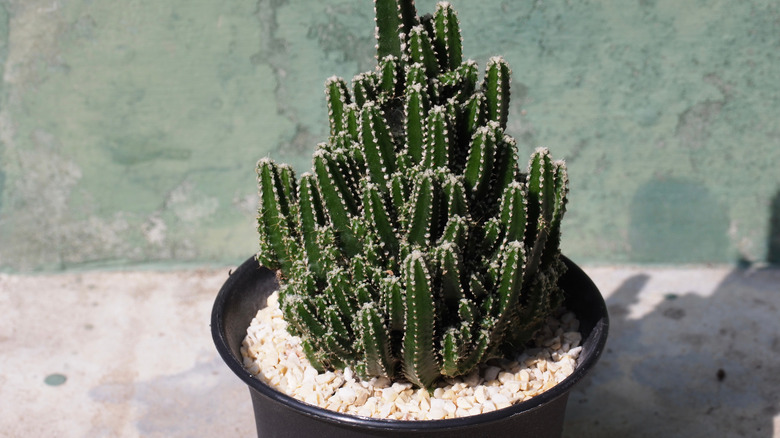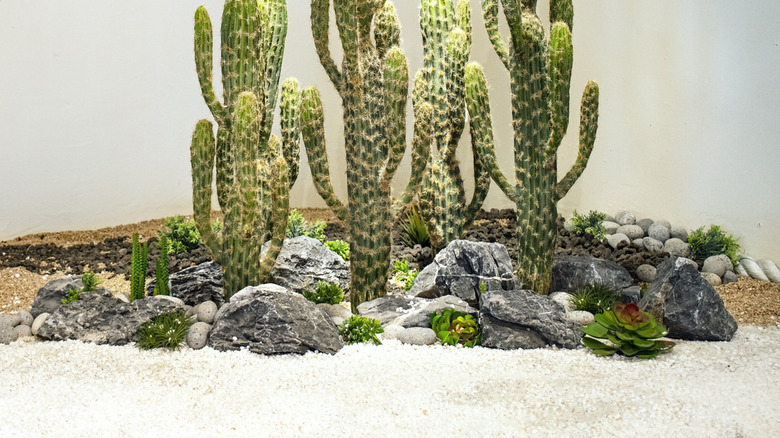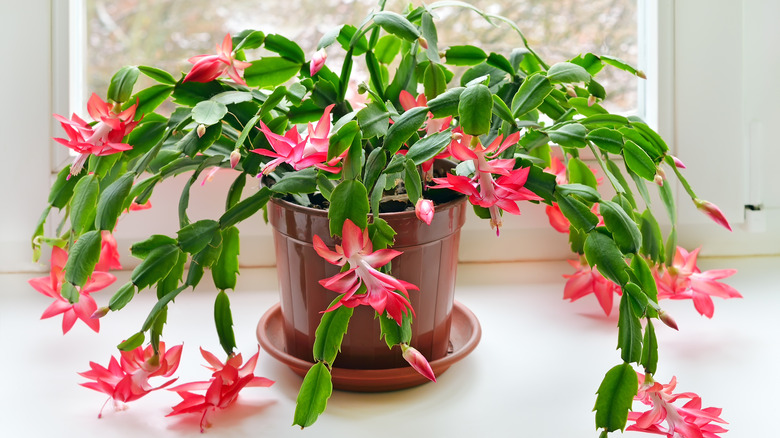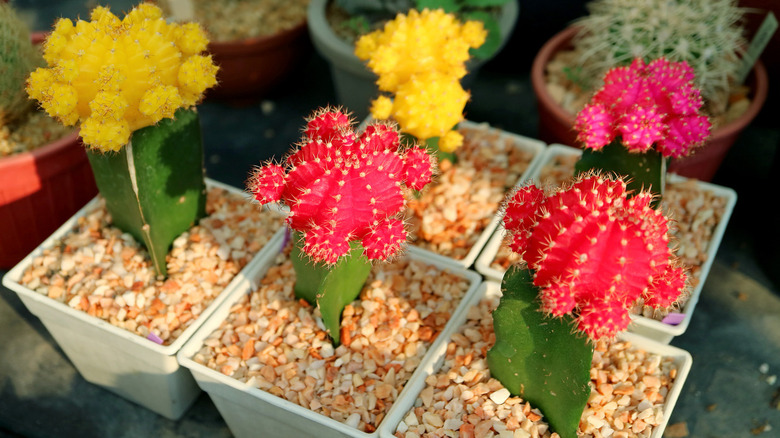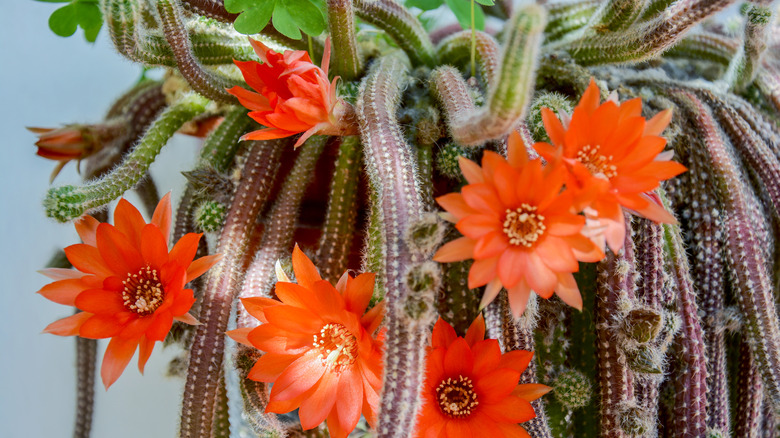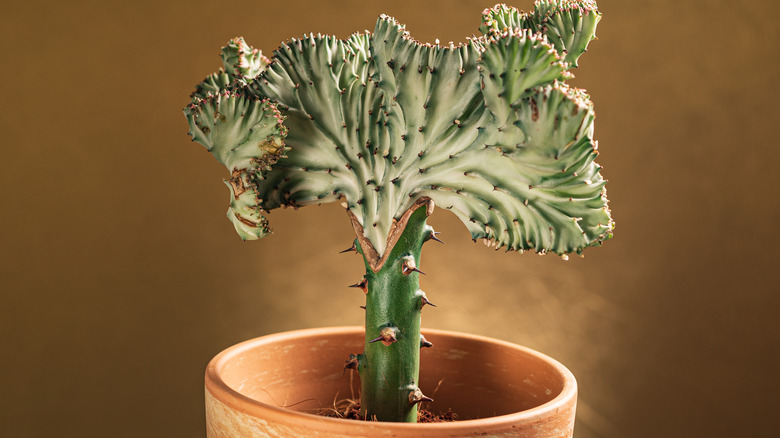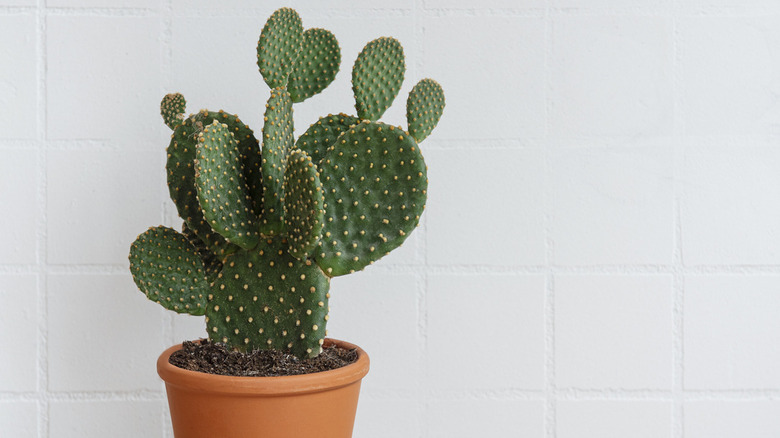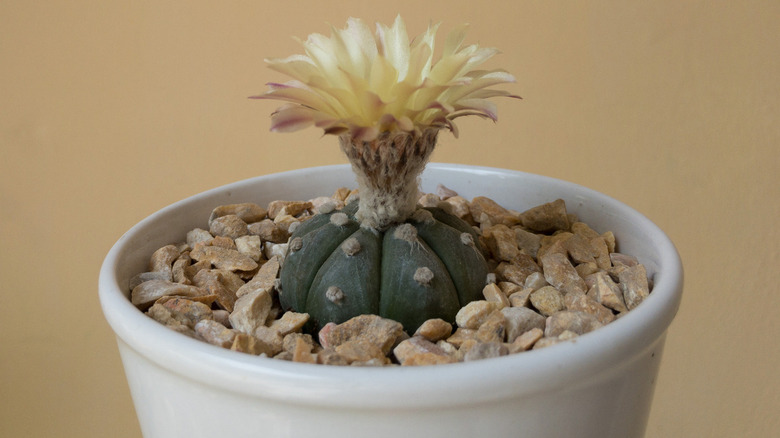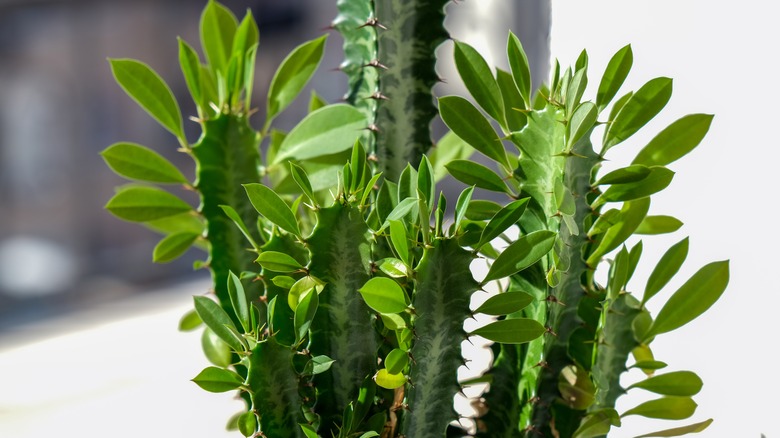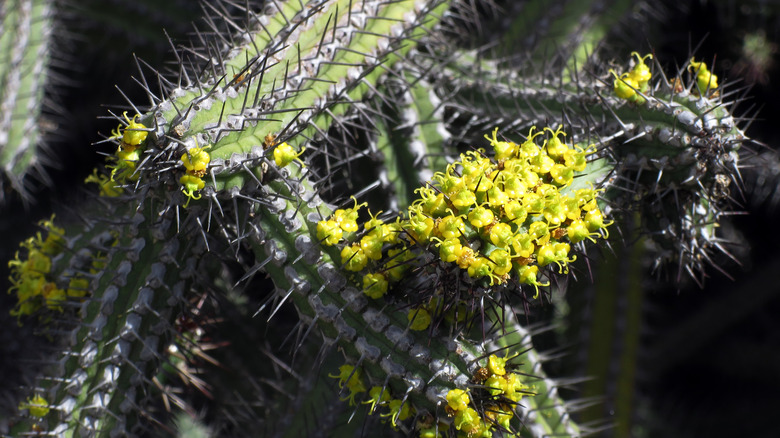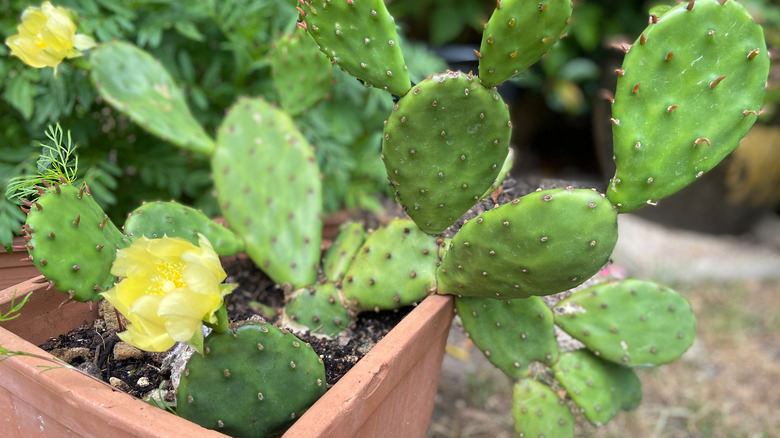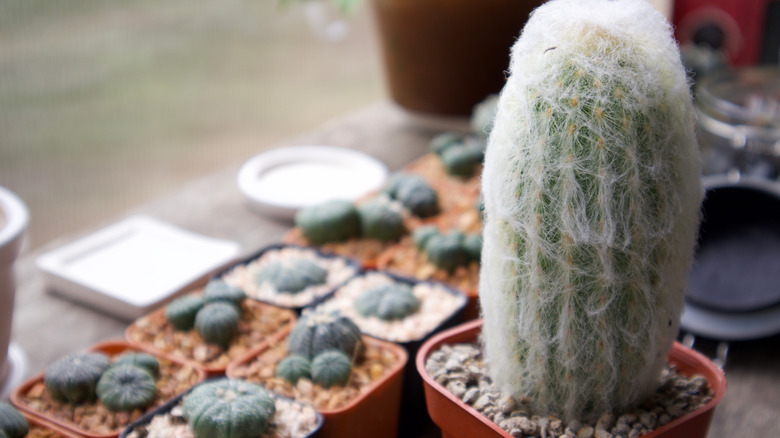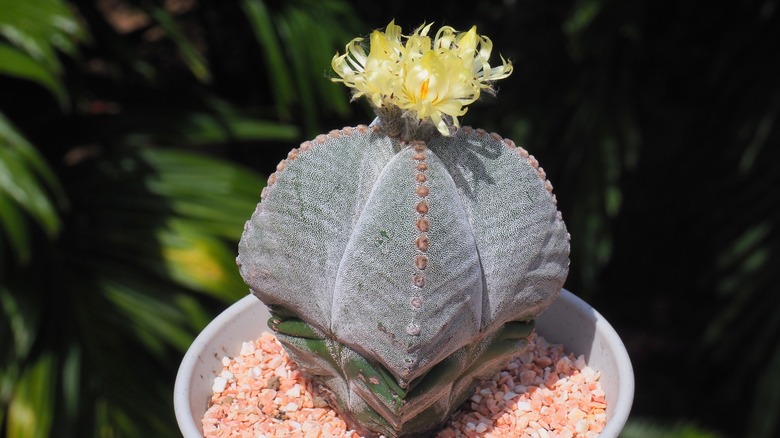15 Unique Cacti Perfect For Your Indoor Space
Having houseplants for your indoor space is not only for decoration purposes but has also been linked to having several health benefits. According to Healthline, indoor plants are associated with improving indoor air quality, reducing stress, and also boosting creativity, especially for those working indoors. With that said, when it comes to indoor plants with low maintenance needs, it doesn't get any better than the cacti plants. Cacti plants are considered succulents because of their unique ability and adaptation to hold water and remain drought tolerant.
This type of succulent is ideal for anyone who wants to bring some greenery indoors but doesn't want to keep up with the needs of most tropical plants. For the majority of the indoor cactus varieties they have simple maintenance needs; enough sunlight and watering once in a while, that's it! Other than that, most cacti plants will reward you with beautiful blooms when the season is right. With all these perks associated with the cacti plant, it doesn't come as a surprise why they are popular green options for indoor spaces. Here are some varieties you can draw inspiration from.
1. Barrel cactus
The barrel cactus has two main varieties: Echinocactus grusonii and Ferocactus cylindraceus. The former features a thorny crown, while the latter has spines all over. This round tubular cactus plant is available in different colors of spines ranging from bright yellow to golden, to mention a few. They can be grown as indoor plants, especially the dwarf variety, via the United States Department of Agriculture.
Bloom Season: Spring and summer
USDA Growing Zone: 10 to 11
Growing Conditions: Full sunlight
Soil Type: Slightly acidic, well-drained soil or potting mix
Size: Up to 3.5 feet tall
2. Rickrack cactus
The Rickrack Cactus (Selenicereus anthonyanus) is among the few epiphytic cactus varieties perfect for hanging baskets. The University of Maine mentions that this cactus variety features leaf-like branches perfectly adapted for gathering sunlight. While it hardly flowers, its showy flower will light up your indoor space if you are lucky enough to get your plant to bloom.
Bloom Season: Spring
USDA Growing Zone: 9 to 11
Growing Conditions: Full sunlight
Soil Type: Well-drained soil or potting mix
Size: Up to 20 feet wide (grows sideways)
3. Fairy castle cactus
The fairy castle cactus (Acanthocereus tetragonus) is famous for its multi-stemmed clamps that take the shape of a castle. This cactus variety is native to North America, and it is a dwarf that also grows relatively slowly, via the World of Succulents. It is a popular indoor plant because of its size and the fact that it is also beginner friendly.
Bloom Season: Hardly blooms
USDA Growing Zone: 10a to 11b
Growing Conditions: Full sunlight
Soil Type: Well-drained soil or potting mix
Size: Up to 3.3 feet tall
4. Saguaro cactus
The Saguaro cactus (Carnegiea gigantea) is a common plant, and you must have seen it in desert scenes in movies. While they might be the tallest plant in the desert, their slow-growing nature makes it possible to grow them indoors. The United States Department of Agriculture highlights that this plant can live for 200 years and only blooms after 50 years. They are low maintenance but will require plenty of sunshine.
Bloom Season: Hardly blooms
USDA Growing Zone: 10a to 11b
Growing Conditions: Full sunlight
Soil Type: Well-drained soil
Size: Up to 60 feet tall
5. Christmas cactus
The Christmas Cactus (Schlumbergera bridgesii) is a popular indoor plant for all the right reasons. It blooms into colorful flowers that light up the entire space. The University of Minnesota Extension mentions that while this plant is a true cactus, it is native and adapted to the rainforest environment. Similar to other holiday cacti, the Christmas cactus plant is long-lived and could be passed from one generation to the next.
Bloom Season: Late fall, early winter.
USDA Growing Zone: 10 to 12
Growing Conditions: Partial sun exposure
Soil Type: Well-drained loamy soil
Size: 6 to 12 inches tall
6. Moon cactus
The Moon cactus (Gymnocalycium mihanovichii) is a brightly colored indoor houseplant popular for its size. It is a grafted plant almost exclusively grown indoors in pots, Succulent and Sunshine mentions. They are quite hardy and thrive on neglect; they do not need frequent watering as too much water can cause the plant to die. They don't live for too long; therefore, enjoy this plant for the short period it will be alive.
Bloom Season: Usually summer
USDA Growing Zone: 11 to 12
Growing Conditions: Partial sun exposure
Soil Type: Fast-draining potting mix
Size: Varies, depending on rootstock
7. Rat tail city
True to its name, the Rat tail cactus' trailing stems (Aporocactus flagelliformis) surely resemble the tail of a rat. This plant is quite peculiar, slowly changing color to beige as it matures. While it produces some flowers during the spring months, they do not last more than a few days. Because of its long trailing stems, the rat tail cactus is ideal for hanging baskets, via Succulent City.
Bloom Season: Spring or summer.
USDA Growing Zone: 10 to 11
Growing Conditions: Full sun exposure
Soil Type: Acidic, well-drained soil
Size: 3 to 6 feet tall
8. Coral cactus
Resembling something straight out of the ocean, the Coral cactus (Euphorbia lactea) is a good option for an indoor cactus plant. While it resembles a cactus plant, it is a succulent that is disfigured, giving it this unique appearance, via Friends of the Port St Lucie Botanical Gardens. Don't let the coral-like fan and cactus body fool you; it is a hardy plant that thrives on neglect. Euphorbia lactea is the perfect plant for first-timers.
Bloom Season: Rarely blooms
USDA Growing Zone: 10b to 11
Growing Conditions: Partial sun exposure
Soil Type: Well-drained cactus soil mix
Size: Up to 15 inches tall
9. Angel wings cactus
Also referred to as the bunny ear cactus, angel wings cactus (Opuntia microdasys) is a popular houseplant because of its ornamental value and low maintenance nature. While it may appear less harmful, the angel wings cactus has sharp hair-like spines that could easily dislodge onto the skin. This cactus plant doesn't grow very tall and only blooms when the right conditions are met, via North Carolina Extension Gardener Plant Toolbox.
Bloom Season: Summer
USDA Growing Zone: 9a to 11b
Growing Conditions: Full sun exposure
Soil Type: Well-drained sandy soil
Size: 2 to 3 feet tall
10. Star cactus
The Star cactus (Astrophytum asterias) is a small cactus variety perfect for indoor growing. Like almost all cactus varieties, the star cactus has protective black and golden spines. The star plant appears virtually flat in the wild and changes color due to temperature differences and water needs, details Texas Parks and Wildlife. Growing star cactus requires patience but will reward you with beautiful blooms later.
Bloom Season: Summer, fall
USDA Growing Zone: 9 to 11
Growing Conditions: Full sun exposure
Soil Type: Well-drained sandy soil
Size: 2 to 7 inches tall
11. African milk tree
The African milk tree (Euphorbia trigona), also referred to as the friendly cactus, is an evergreen succulent that resembles a cactus. It features leaves arranged on a rectangular thorny rigid stem. Although native to Central Africa, this succulent is used as a house plant in the US. The African milk tree hardly flowers; however, when it does, the blooms are often white and yellow, via Friends of the Port St Lucie Botanical Gardens.
Bloom Season: Spring, Summer
USDA Growing Zone: 9b to 11
Growing Conditions: Partial sun exposure
Soil Type: Well-drained loamy soil
Size: 6 to 9 feet tall
12. Baioensis
The Baioensis (Euphorbia baioensis) is a cactus plant whose origin is from Kenya. This thorny plant grows into a small shrub thanks to the multiple erect stems. It doesn't grow very tall and has short rigid spines for protection, just like any other cactus. Unlike different cactus varieties, the baioensis can benefit significantly from fertilizer application, via World of Succulents.
Bloom Season: Spring to summer
USDA Growing Zone: 10b to 11
Growing Conditions: Partial sun exposure
Soil Type: Neutral, well-drained soil
Size: 6 to 18 inches feet tall
13. Eastern prickly pear cactus
The Eastern prickly pear cactus (Opuntia humifusa) is quite simple to grow and will reward you with a brilliant yellow flower in good time. Unknown to many homeowners, this plant is quite invasive and should be planted in a pot to control growth. Although known for its ornamental value, it also produces red egg-shaped fruits that are edible, via The Nature Conservancy.
Bloom Season: Summer
USDA Growing Zone: 4a to 9a
Growing Conditions: Full sun exposure
Soil Type: Neutral to acidic, well-drained soil
Size: 6 to 12 inches feet tall
14. Old man cactus
The peculiar-looking Old man cactus (Cephalocereus senilis) features bulbous stems covered with white hair akin to a person aging. It is a popular house plant thanks to the attractive white coat. The white coat is only present on the younger plants and soon disappears as the plant matures. The old man cactus is fast growing and can get quite tall, especially in its natural habitat, via the North Carolina Extension Gardener Plant Toolbox.
Bloom Season: Hardly blooms
USDA Growing Zone: 9 to 11
Growing Conditions: Full sun exposure
Soil Type: Well-drained loamy soil
Size: 3 to 40 inches tall
15. Bishop's cap cactus
The Bishop's Cap Cactus (Astrophytum myriostigma) is one of the few spineless cacti grown predominantly indoors for ornamental value. It assumes a round shape featuring five ribs that converge at a single point, via Missouri Botanical Garden. While the bishop's cap cactus takes a long time to blossom, it blooms successively, meaning you get to enjoy the beautiful flowers longer.
Bloom Season: Spring or Summer
USDA Growing Zone: 10 to 11
Growing Conditions: Full sun exposure
Soil Type: Well-drained loamy soil
Size: Up to 2 feet tall
